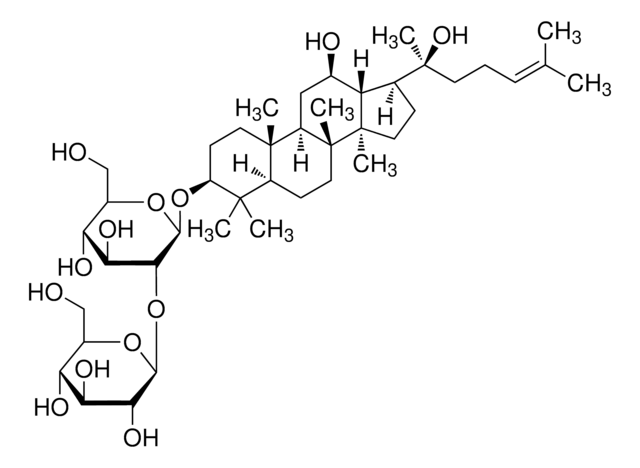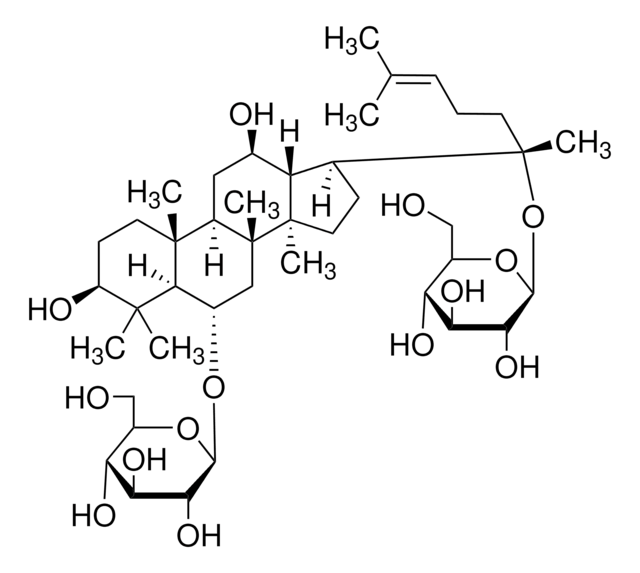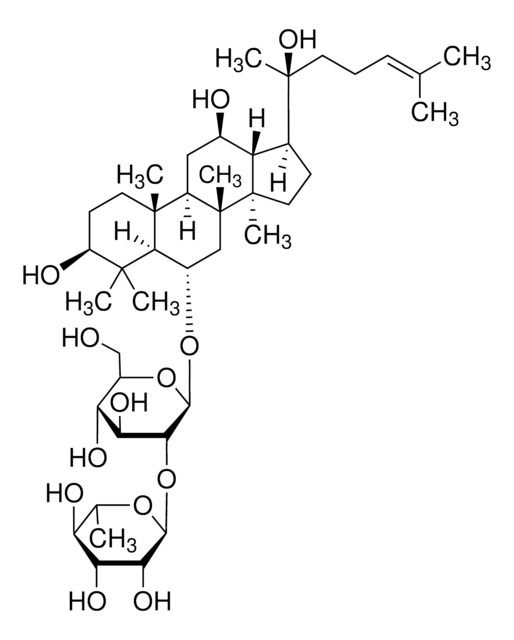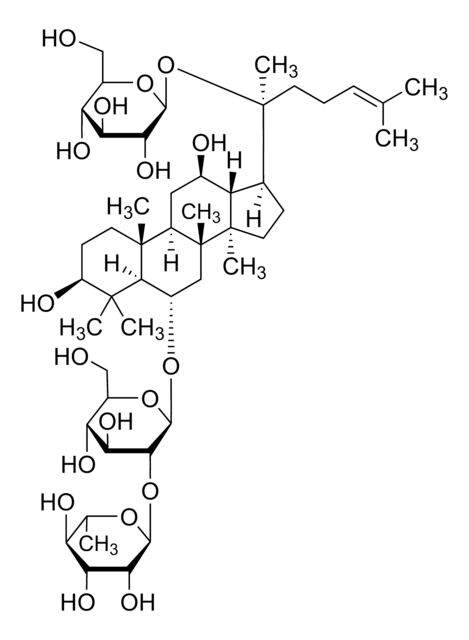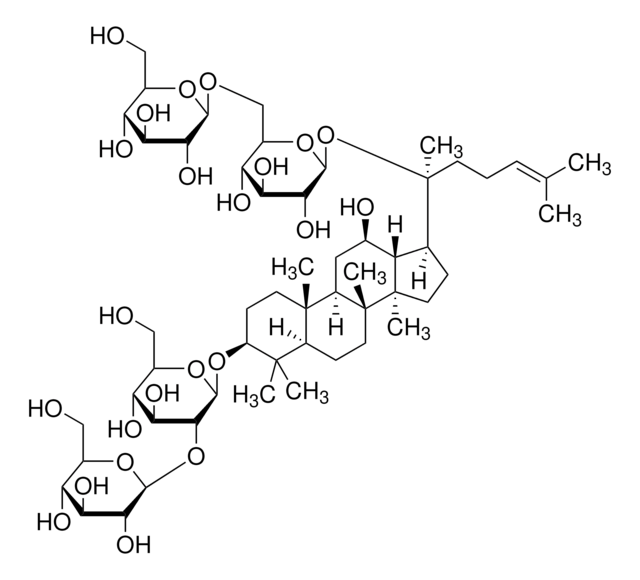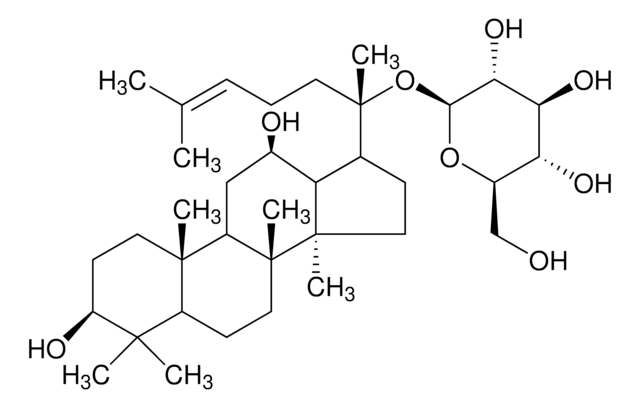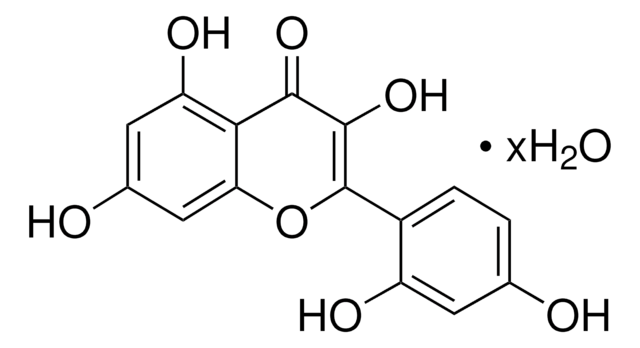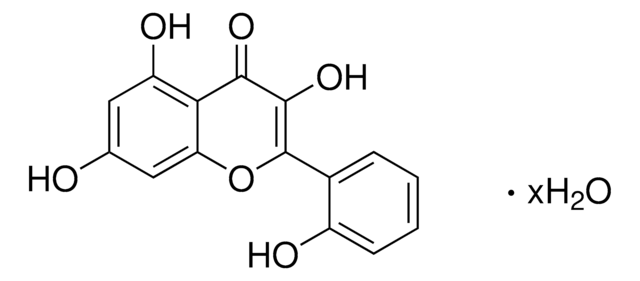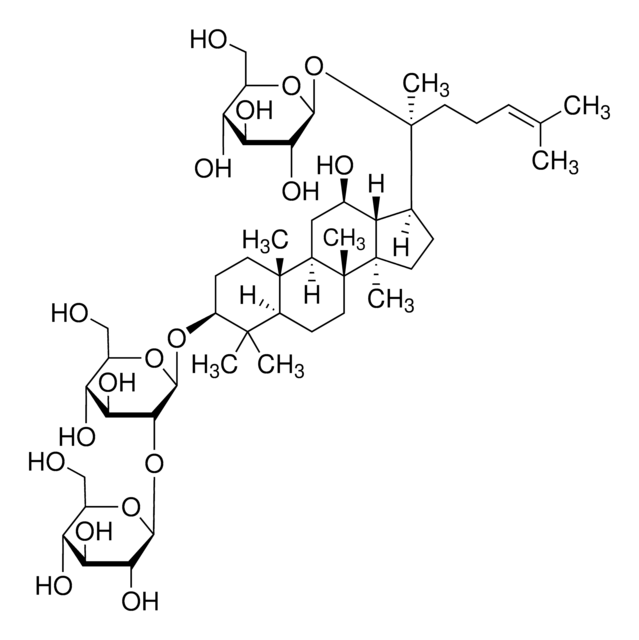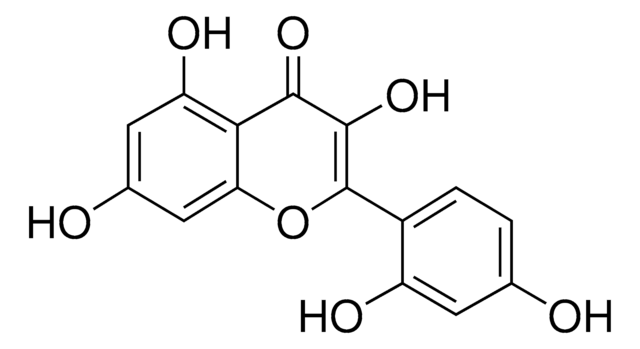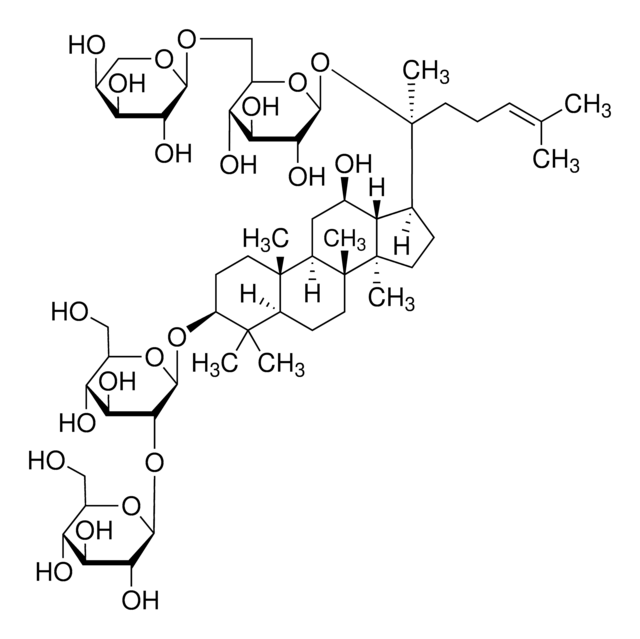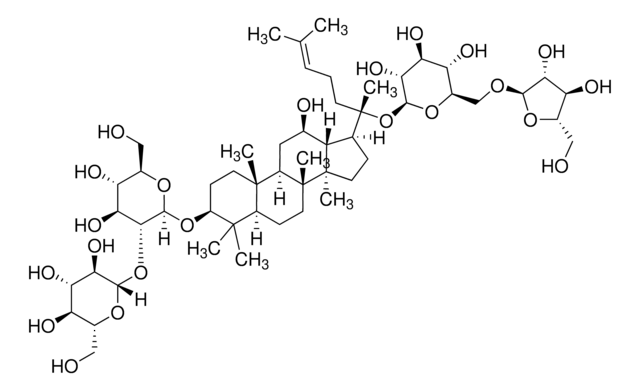Kluczowe dokumenty
73658
Ginsenoside Rh2
analytical standard
Synonim(y):
(3β,12β)-12,20-Dihydroxydammar-24-en-3-yl-β-D-glucopyranoside, 20(S)-Ginsenoside-Rh2
About This Item
Polecane produkty
klasa czystości
analytical standard
Poziom jakości
Próba
≥97.0% (HPLC)
okres trwałości
limited shelf life, expiry date on the label
metody
HPLC: suitable
gas chromatography (GC): suitable
Zastosowanie
food and beverages
Format
neat
temp. przechowywania
2-8°C
ciąg SMILES
C\C(C)=C/CC[C@](C)(O)[C@H]1CC[C@]2(C)[C@@H]1[C@H](O)C[C@@H]3[C@@]4(C)CC[C@H](O[C@@H]5O[C@H](CO)[C@@H](O)[C@H](O)[C@H]5O)C(C)(C)[C@@H]4CC[C@@]23C
InChI
1S/C36H62O8/c1-20(2)10-9-14-36(8,42)21-11-16-35(7)27(21)22(38)18-25-33(5)15-13-26(32(3,4)24(33)12-17-34(25,35)6)44-31-30(41)29(40)28(39)23(19-37)43-31/h10,21-31,37-42H,9,11-19H2,1-8H3/t21-,22+,23+,24-,25+,26-,27-,28+,29-,30+,31-,33-,34+,35+,36-/m0/s1
Klucz InChI
CKUVNOCSBYYHIS-IRFFNABBSA-N
Szukasz podobnych produktów? Odwiedź Przewodnik dotyczący porównywania produktów
Opis ogólny
Zastosowanie
Opakowanie
Inne uwagi
Wybierz jedną z najnowszych wersji:
Masz już ten produkt?
Dokumenty związane z niedawno zakupionymi produktami zostały zamieszczone w Bibliotece dokumentów.
Klienci oglądali również te produkty
Nasz zespół naukowców ma doświadczenie we wszystkich obszarach badań, w tym w naukach przyrodniczych, materiałoznawstwie, syntezie chemicznej, chromatografii, analityce i wielu innych dziedzinach.
Skontaktuj się z zespołem ds. pomocy technicznej